CASANOVA
KIMBELL ART MUSEUM
august 27-december 31, 2017
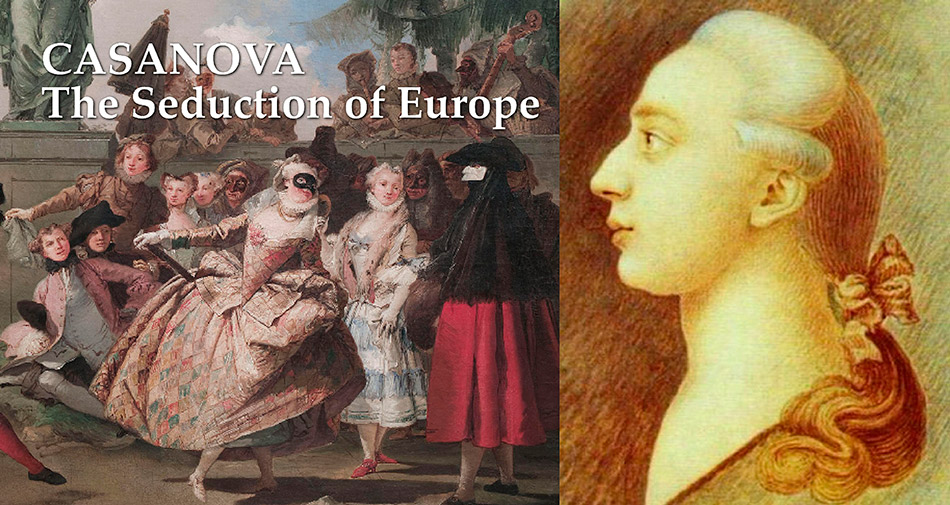
LEFT: Tiepolo painting, Charlatan. RIGHT: Giacomo Casanova, drawing by his brother Francesco
The exhibition presents a free-spirited exploration of mid-18th-century Europe.
The celebrated Giacomo Casanova (1725–1798), who epitomizes
the sophistication of the 18th century, will act as our guide.
A different portrait of Casanova
Casanova emerges as daringly modern in his freewheeling approach to life and his apparently limitless capacity for self-invention. Although his name is now synonymous with the archetypical seducer and adventurer, he was in fact much more than that: contemporaries regarded him as a charming and witty conversationalist, an expert on many fascinating topics and an international man of letters.
Casanova lived in or visited many of the principal art centers of 18th-century Europe, particularly Venice, Paris and London, but also the capitals of Central and Eastern Europe. Moreover, he knew many of the greatest figures of the age: the philosophers Voltaire and Rousseau; the celebrated opera singer Farinelli; Benjamin Franklin, American ambassador to France; two Popes; and such monarchs as Louis XV of France, George III of Great Britain and Catherine the Great of Russia.
Casanova’s famous memoirs
His famous memoirs portray an individual perfectly suited to his era: one of glamour, creativity, sensual pleasure and social and political ambition. Inspired by Casanova’s story, the exhibition will introduce 21st-century viewers to the variety and complexity of European art and culture that form the backdrop of his life.
Exhibition Highlights
This exhibition will feature approximately 200 works of art, including paintings, sculpture, drawings, prints, furniture, metalwork, porcelain, costumes and musical instruments. Together, they will illustrate the splendor of mid-18th-century Europe, gently structured around the chronology, geography and major incidents of Casanova’s life, and will address such themes as travel; courtship and seduction; theatre, identity and the mask; and the pleasures of dining.
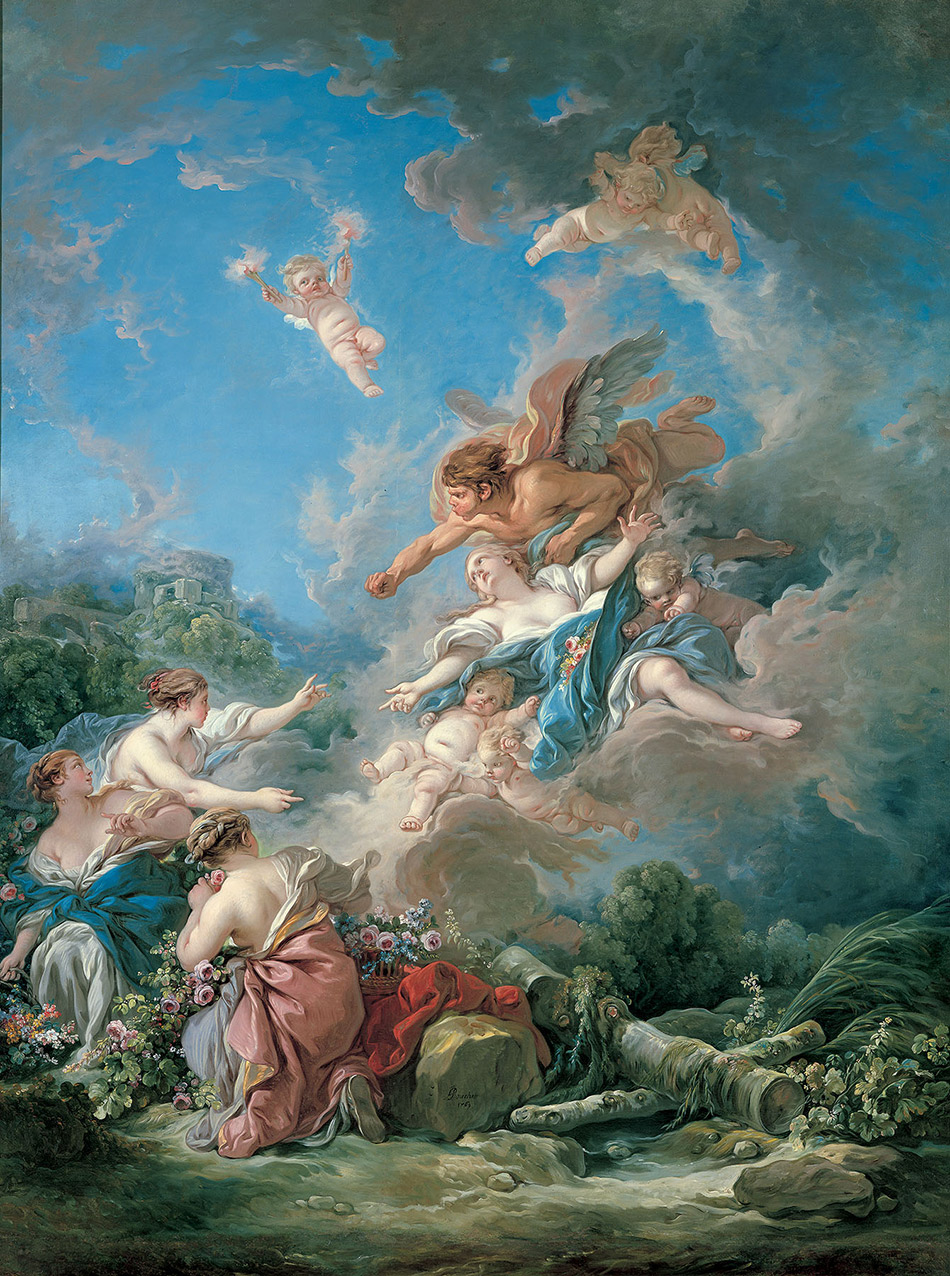 Francois Boucher: Boreas Abducting Oreithyia, 1769, Oil on canvas, 107 5/8 x 80 11/16 in. (273.3 x 205 cm) Kimbell Art Museum, Fort Worth, TX
Francois Boucher: Boreas Abducting Oreithyia, 1769, Oil on canvas, 107 5/8 x 80 11/16 in. (273.3 x 205 cm) Kimbell Art Museum, Fort Worth, TX
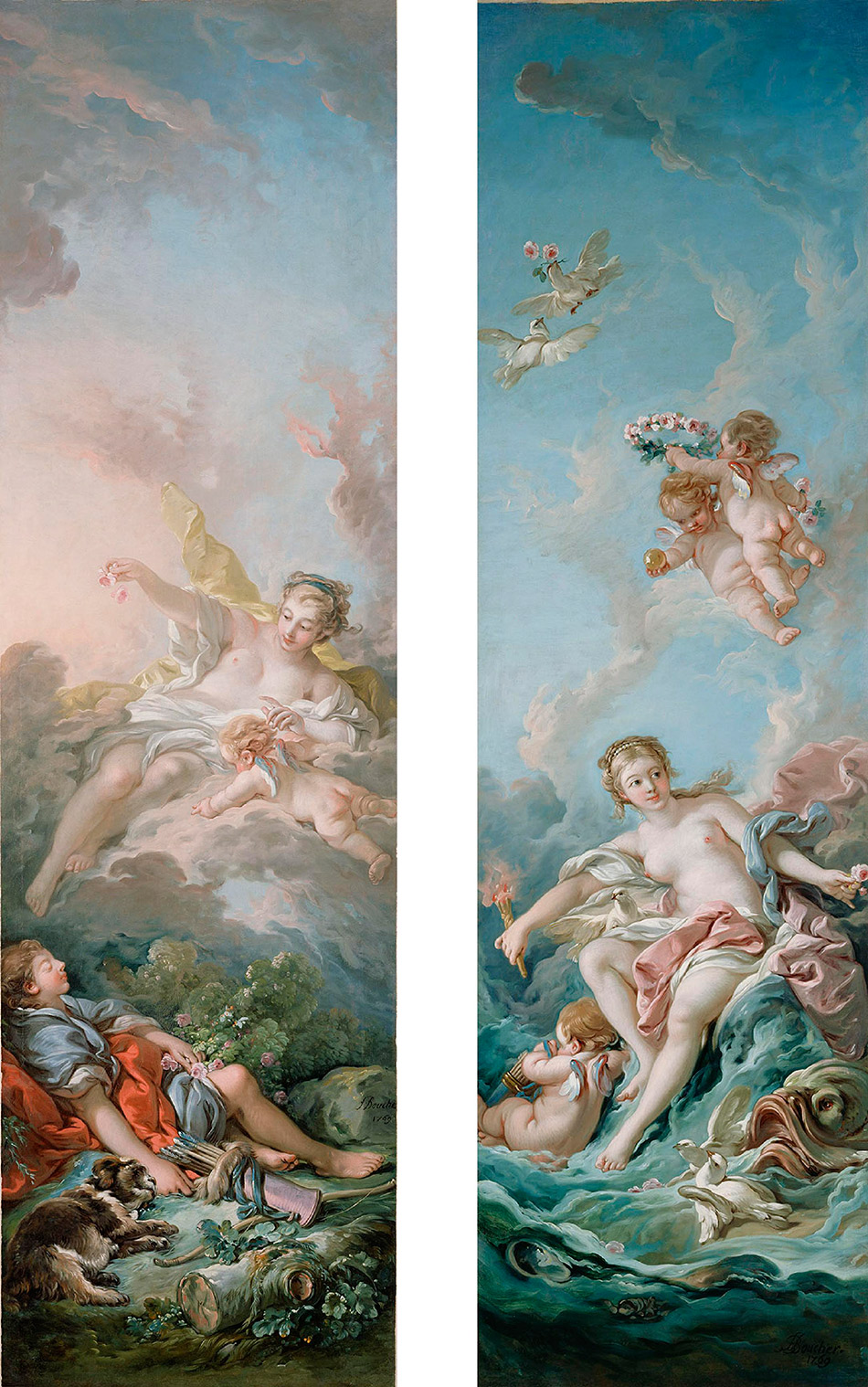 LEFT: Francois Boucher: Aurora and Cephalus, 1769, Oil on canvas, 265 × 86 cm (104 5/16 × 33 7/8 in.) The J. Paul Getty Museum, Los Angeles, CARIGHT: Francois Boucher: Venus On The Waves, 1769, Oil on canvas, 265.7 × 76.5 cm (104 5/8 × 30 1/8 in.) The J. Paul Getty Museum, Los Angeles, CA
LEFT: Francois Boucher: Aurora and Cephalus, 1769, Oil on canvas, 265 × 86 cm (104 5/16 × 33 7/8 in.) The J. Paul Getty Museum, Los Angeles, CARIGHT: Francois Boucher: Venus On The Waves, 1769, Oil on canvas, 265.7 × 76.5 cm (104 5/8 × 30 1/8 in.) The J. Paul Getty Museum, Los Angeles, CA
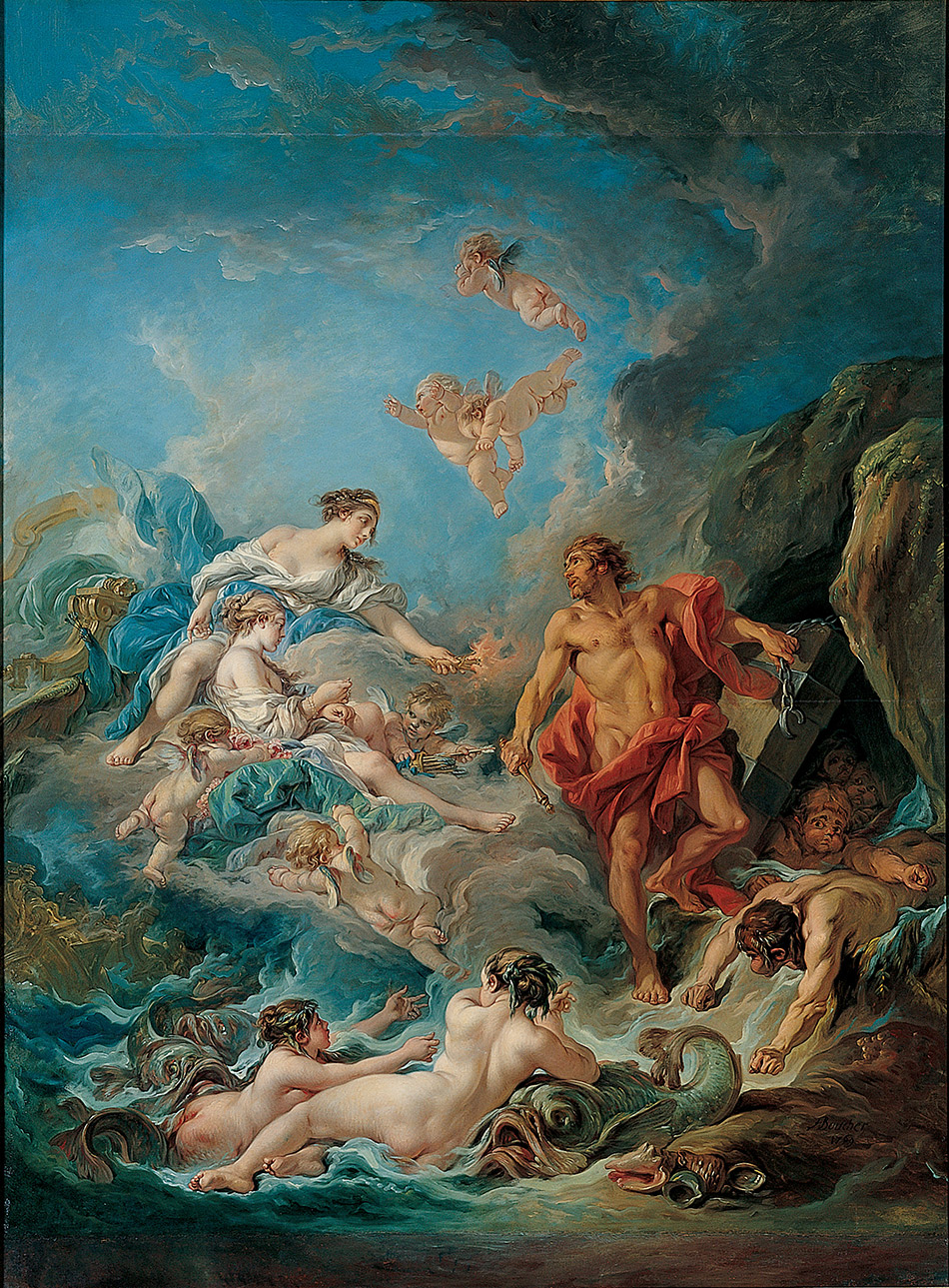 Francois Boucher, Juno Asking Aeolus to Release the Winds, 1769. Oil on canvas, 109 ½ x 80 inc. (278.2 x 203.2 cm) Kimbell Art Museum, Fort Worth, TX
Francois Boucher, Juno Asking Aeolus to Release the Winds, 1769. Oil on canvas, 109 ½ x 80 inc. (278.2 x 203.2 cm) Kimbell Art Museum, Fort Worth, TX
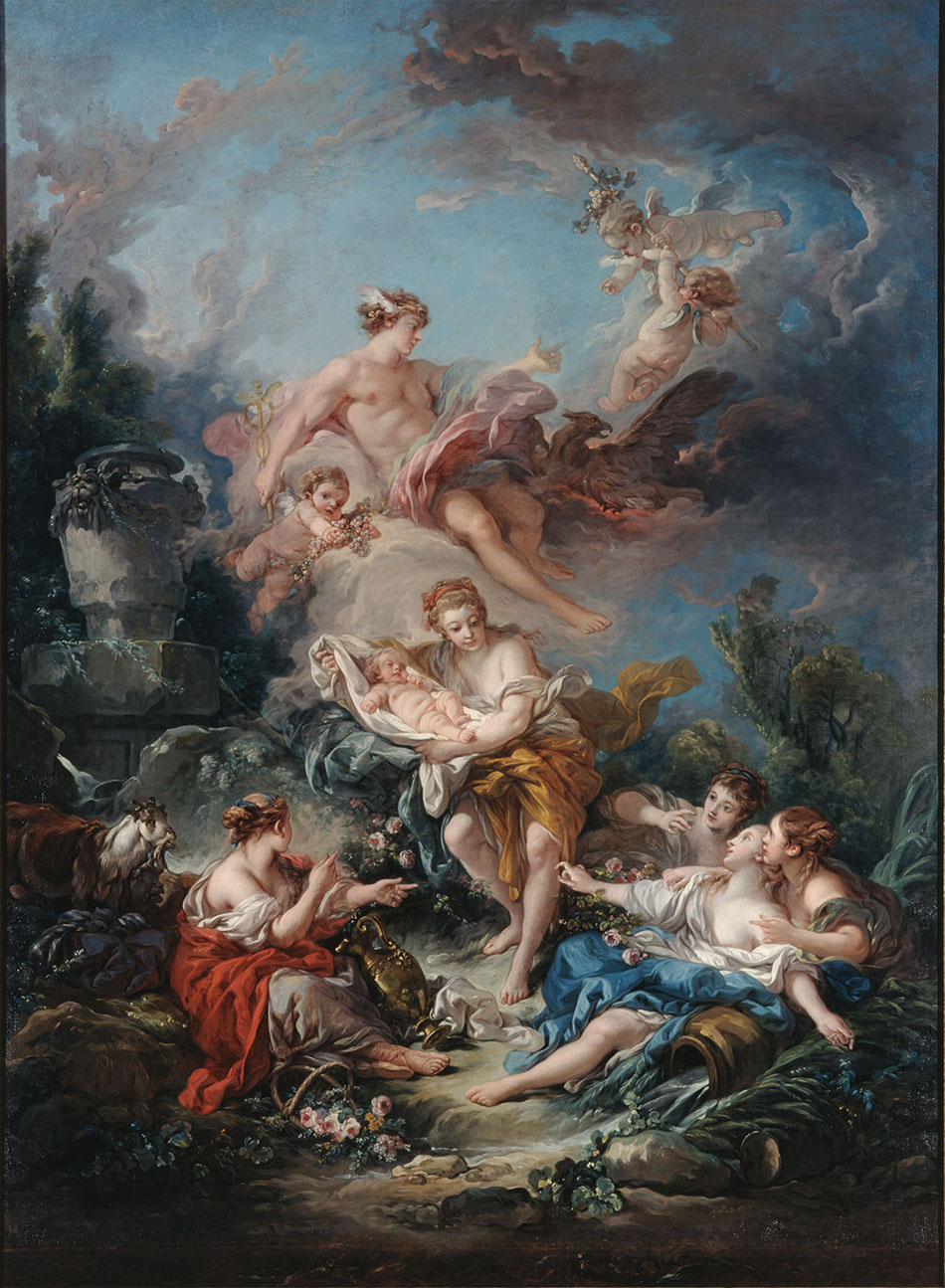 Francois Boucher, Mercury Confiding the Infant Bacchus to the Nymphs of Nysa, 1769. Oil on canvas, 107 5/16 x 79 3/8 in. (272.5 x 201.6 cm) Kimbell Art Museum, Fort Worth, TX
Francois Boucher, Mercury Confiding the Infant Bacchus to the Nymphs of Nysa, 1769. Oil on canvas, 107 5/16 x 79 3/8 in. (272.5 x 201.6 cm) Kimbell Art Museum, Fort Worth, TX
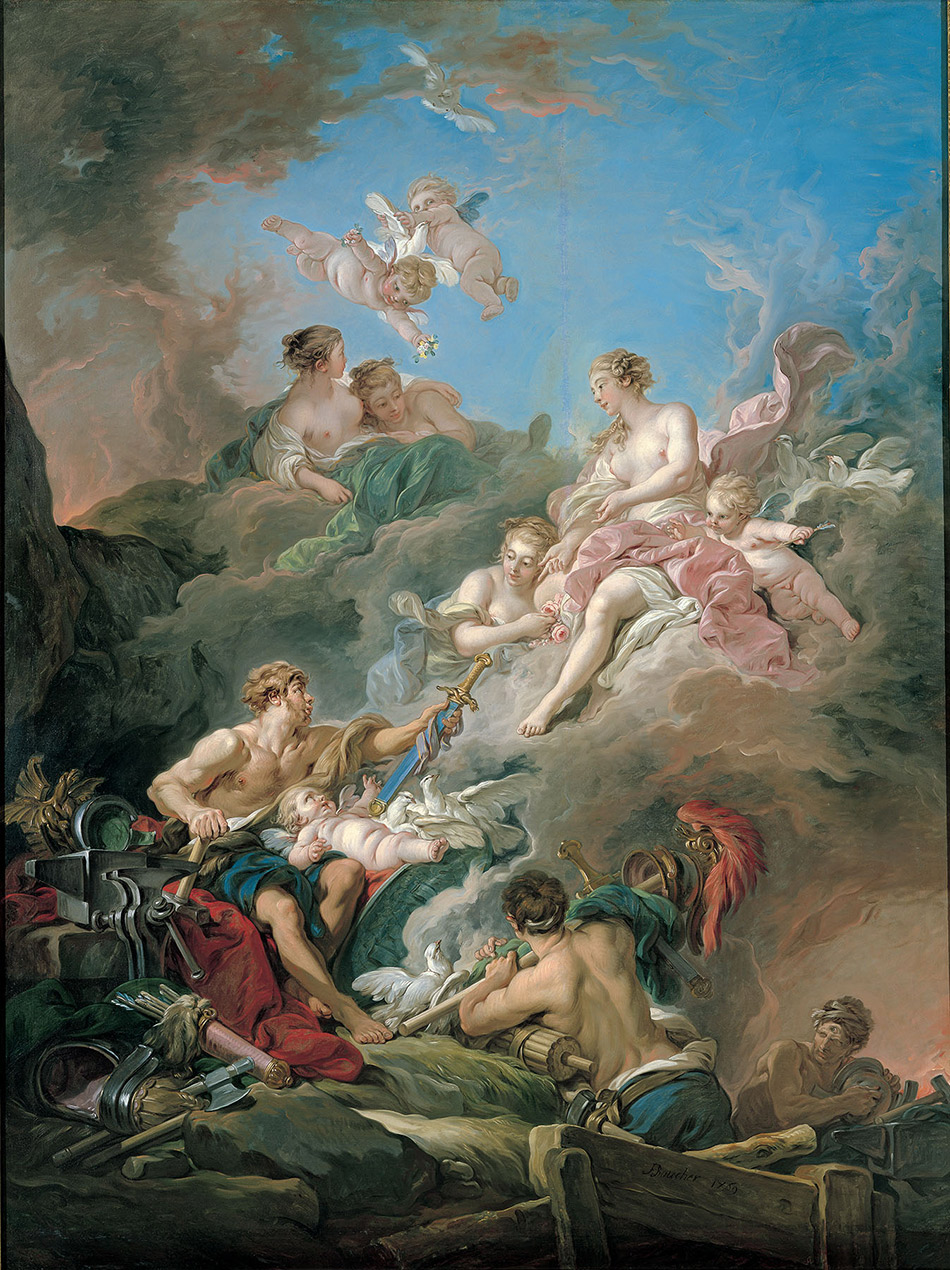 Francois Boucher, Venus at Vulcan’s Forge, 1769. Oil on canvas, 107 11/16 x 80 9/16 in. (273.5 x 204.7 cm) Kimbell Art Museum, Fort Worth, TX
Francois Boucher, Venus at Vulcan’s Forge, 1769. Oil on canvas, 107 11/16 x 80 9/16 in. (273.5 x 204.7 cm) Kimbell Art Museum, Fort Worth, TX
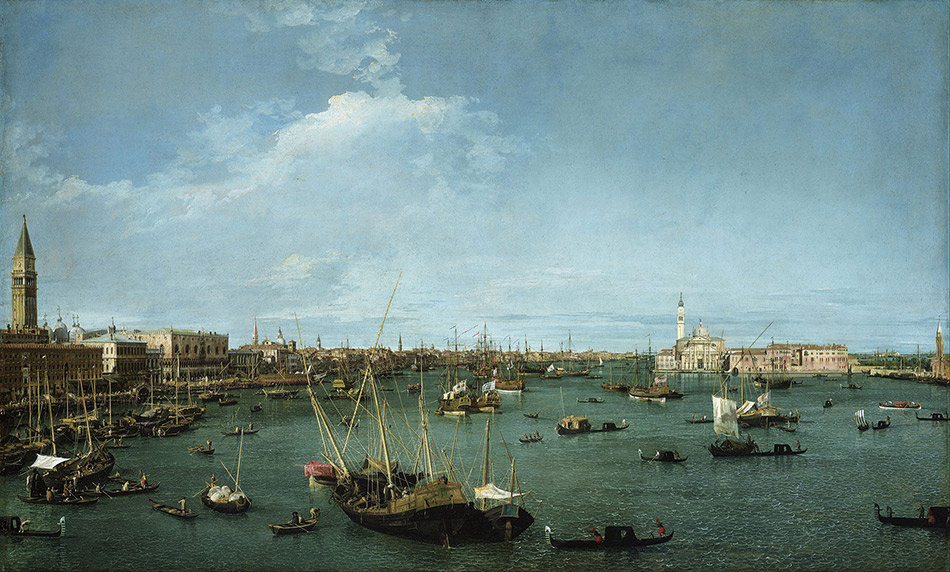 Canaletto (Giovanni Antonio Canal) Bacino di San Marco, Venice, ca. 1738. Oil on canvas, 124.5 x 204.5 cm (49 x 80 1/2 in.) Museum of Fine Arts, Boston, MA
Canaletto (Giovanni Antonio Canal) Bacino di San Marco, Venice, ca. 1738. Oil on canvas, 124.5 x 204.5 cm (49 x 80 1/2 in.) Museum of Fine Arts, Boston, MA
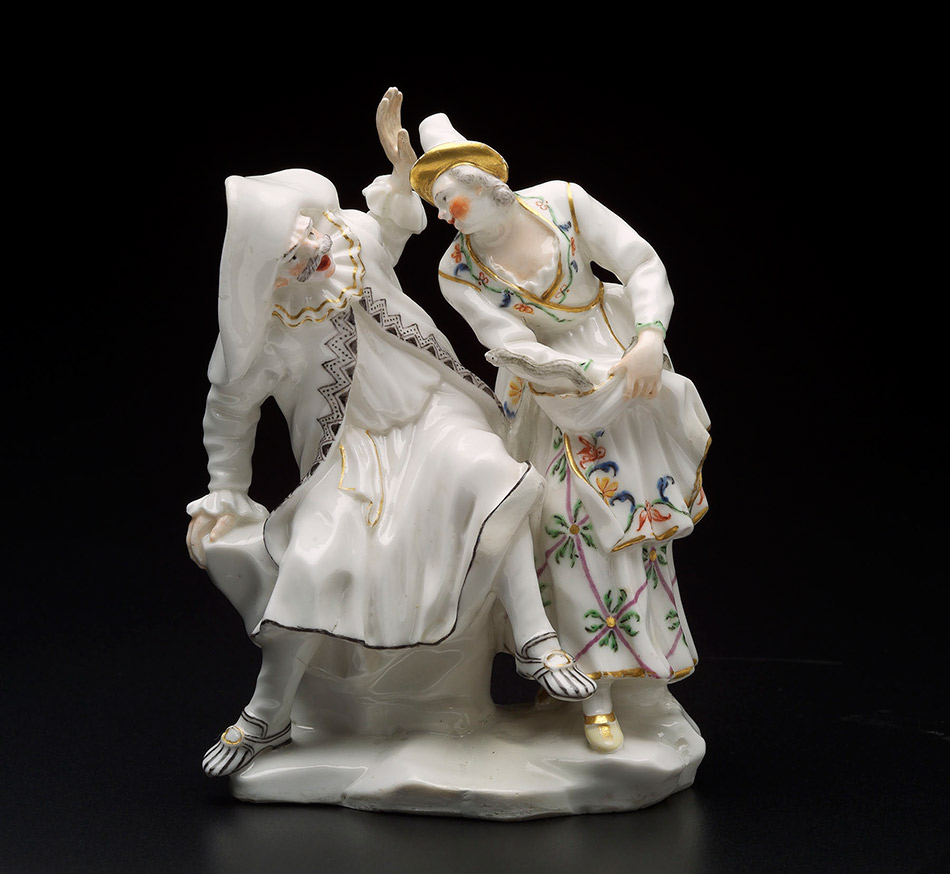 Italian, made by Capodimonte Manufactory, modeled by Giuseppe Gricci, The Doctor and Isabella, c. 1750. Soft-paste porcelain with colored enamel and gilded decoration, Height: 5 ¾ in (14.6 cm) Museum of Fine Arts, Boston, MA
Italian, made by Capodimonte Manufactory, modeled by Giuseppe Gricci, The Doctor and Isabella, c. 1750. Soft-paste porcelain with colored enamel and gilded decoration, Height: 5 ¾ in (14.6 cm) Museum of Fine Arts, Boston, MA
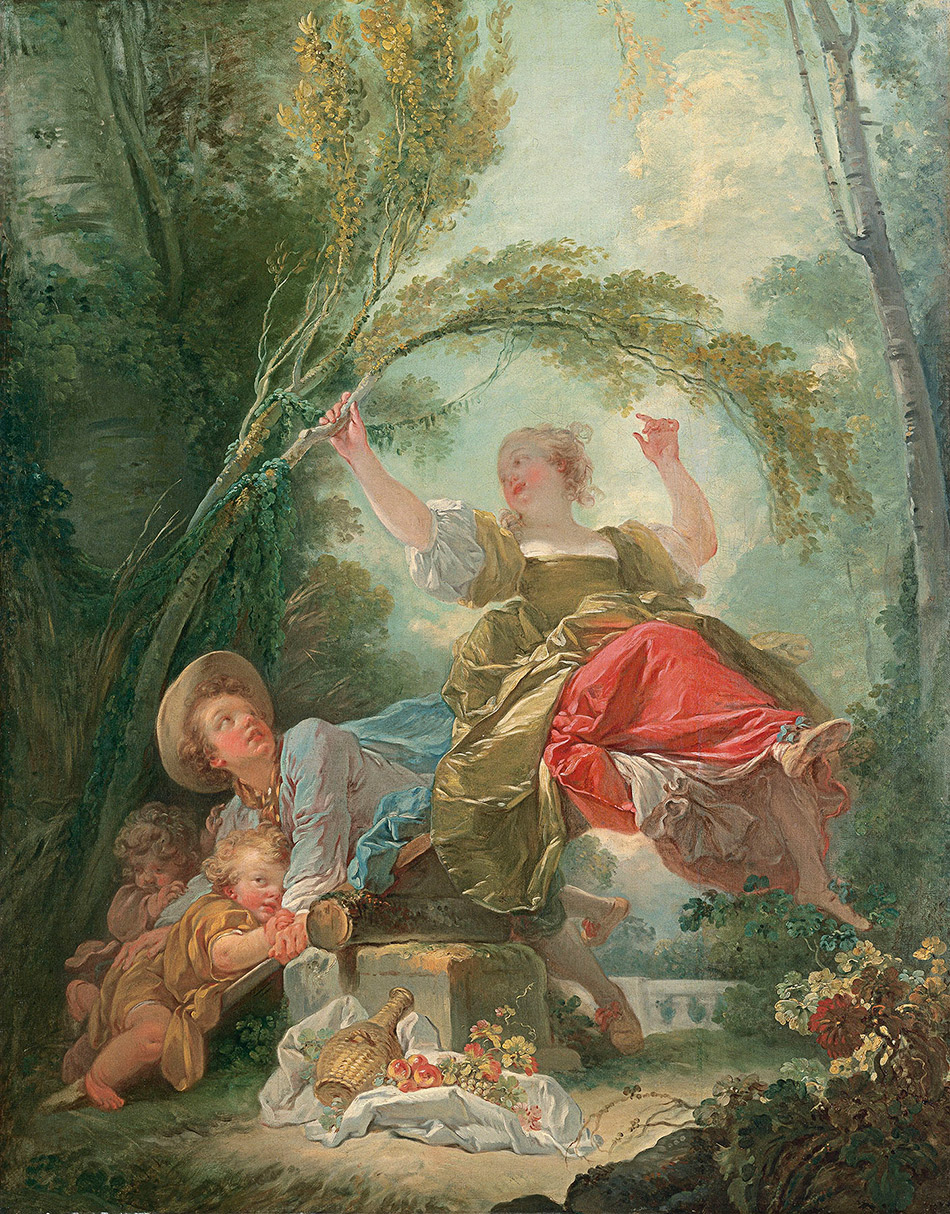 Jean-Honoré Fragonard, The See-Saw, c. 1750-52. Oil on Canvas, 47 ¼ x 37 ¼ in. (120 x 94.5 cm) Museu Thyssen-Bornemisza, Madrid. COPYRIGHT © Museo Thyssen-Bornemisza. Madrid
Jean-Honoré Fragonard, The See-Saw, c. 1750-52. Oil on Canvas, 47 ¼ x 37 ¼ in. (120 x 94.5 cm) Museu Thyssen-Bornemisza, Madrid. COPYRIGHT © Museo Thyssen-Bornemisza. Madrid
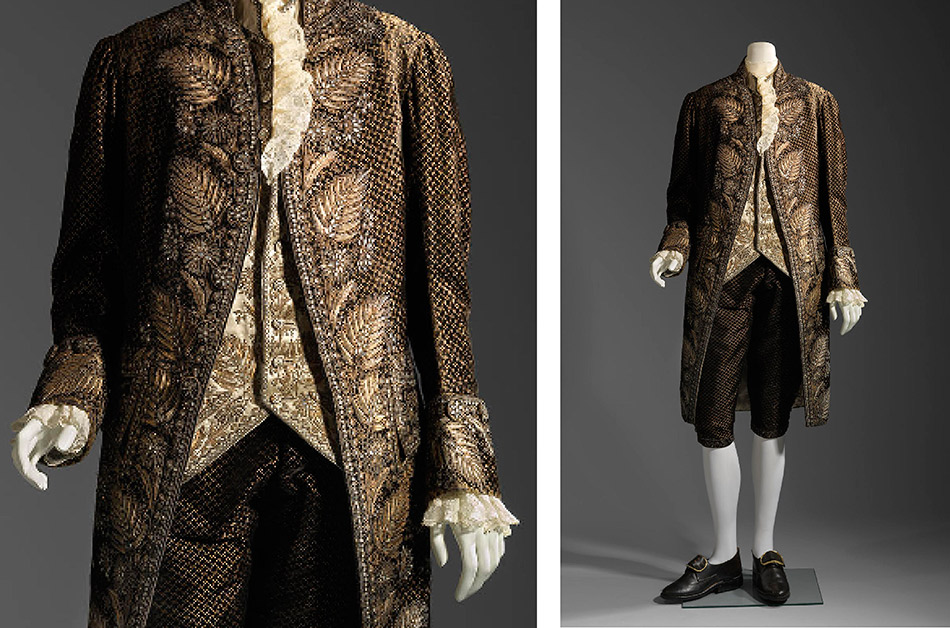
French Man’s Court Suit, 785-92. Silk, velvet, and embroidered with gilt silver wire, sequins, and bits of glass, 43 ½ in. (110.5 cm); 26 ½ in. (67.3 cm); 23 5/8 in. (6- cm) Museum of Fine Arts, Boston, MA
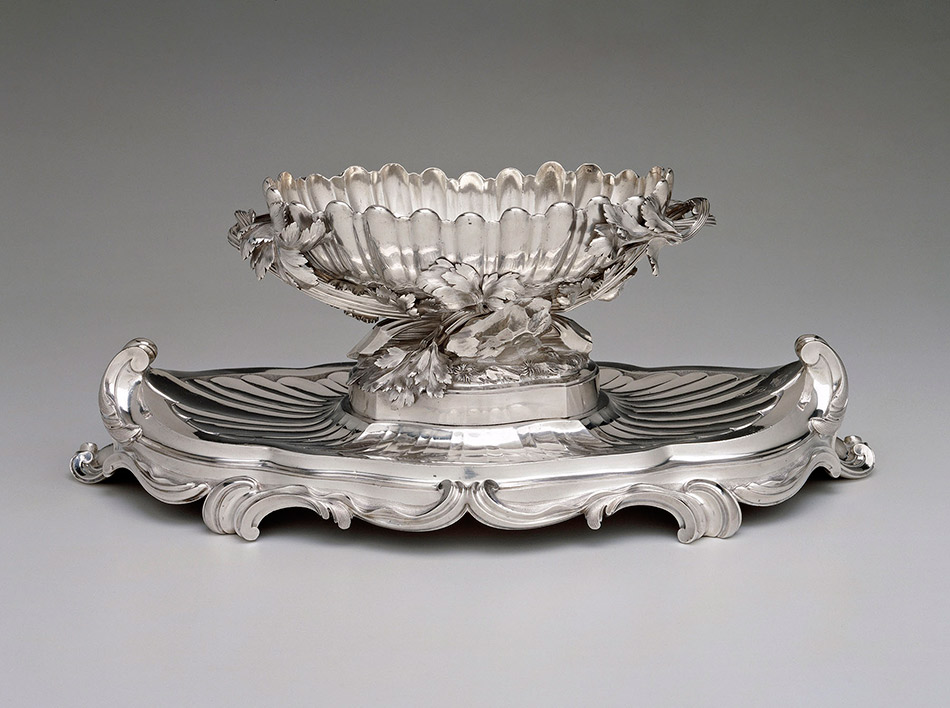 French, marked by François-Thomas Germain, Sauceboat with Liner and Stand, 1756-59. Silver, 5 3/8 x 15 3/8 x 8 7/8 in. (13.8 x 39 x 22.6 cm) Museum of Fine Arts, Boston, MA
French, marked by François-Thomas Germain, Sauceboat with Liner and Stand, 1756-59. Silver, 5 3/8 x 15 3/8 x 8 7/8 in. (13.8 x 39 x 22.6 cm) Museum of Fine Arts, Boston, MA
 William Hogarth (British, 1697-1764) The Lady’s Last Stake, 1759. Oil on canvas, support: 36 x 41 1/2 inches (91.44 x 105.41 cm); framed: 47 x 52 3/4 x 2 3/4 inches (119.38 x 133.985 x 6.985 cm) Collection Albright-Knox Art Gallery, Buffalo, New York; Gift of Seymour H. Knox, Jr., 1945 (1945:2.1) Photograph by Tom Loonan
William Hogarth (British, 1697-1764) The Lady’s Last Stake, 1759. Oil on canvas, support: 36 x 41 1/2 inches (91.44 x 105.41 cm); framed: 47 x 52 3/4 x 2 3/4 inches (119.38 x 133.985 x 6.985 cm) Collection Albright-Knox Art Gallery, Buffalo, New York; Gift of Seymour H. Knox, Jr., 1945 (1945:2.1) Photograph by Tom Loonan
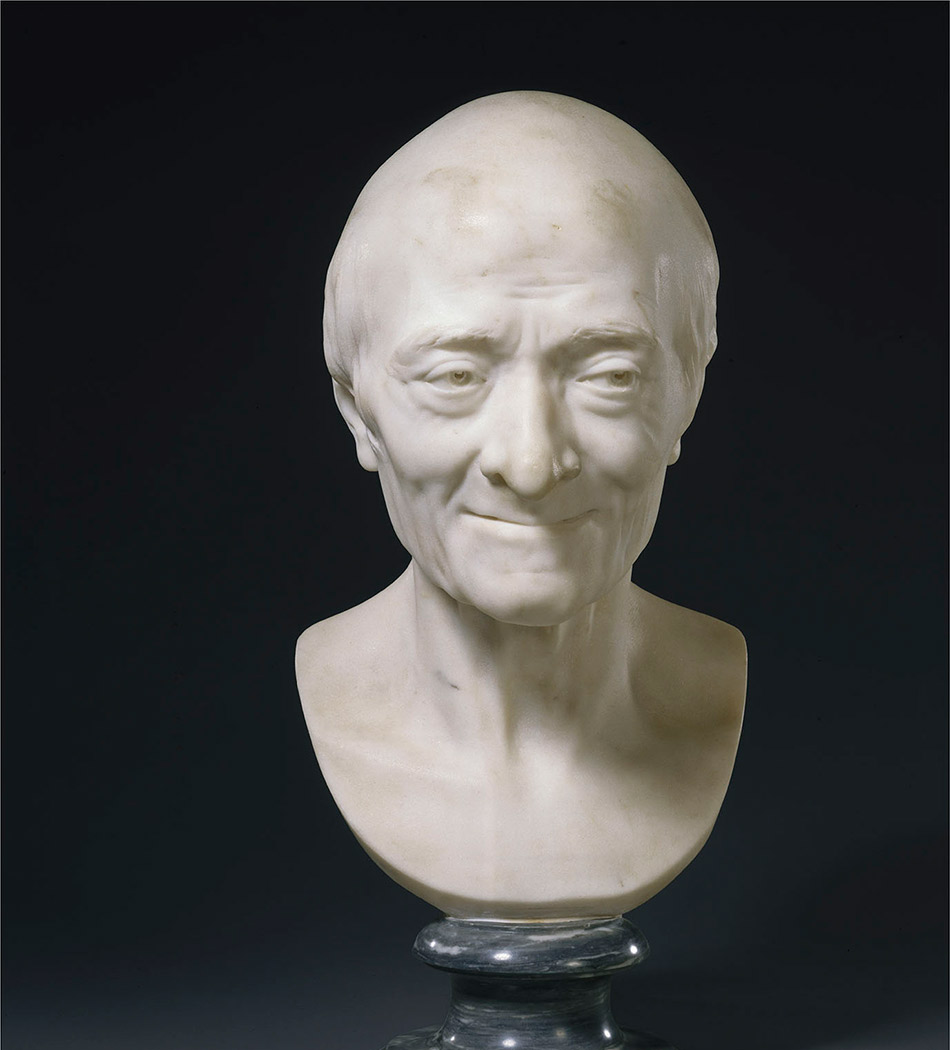 Jean-Antoine Houdon, Voltaire, 1778. Marble, 14 3/8 x 8 3/8 x 8 3/8 in. (36.5 x 21.3 21.3 cm) National Gallery of Art, Washington DC
Jean-Antoine Houdon, Voltaire, 1778. Marble, 14 3/8 x 8 3/8 x 8 3/8 in. (36.5 x 21.3 21.3 cm) National Gallery of Art, Washington DC
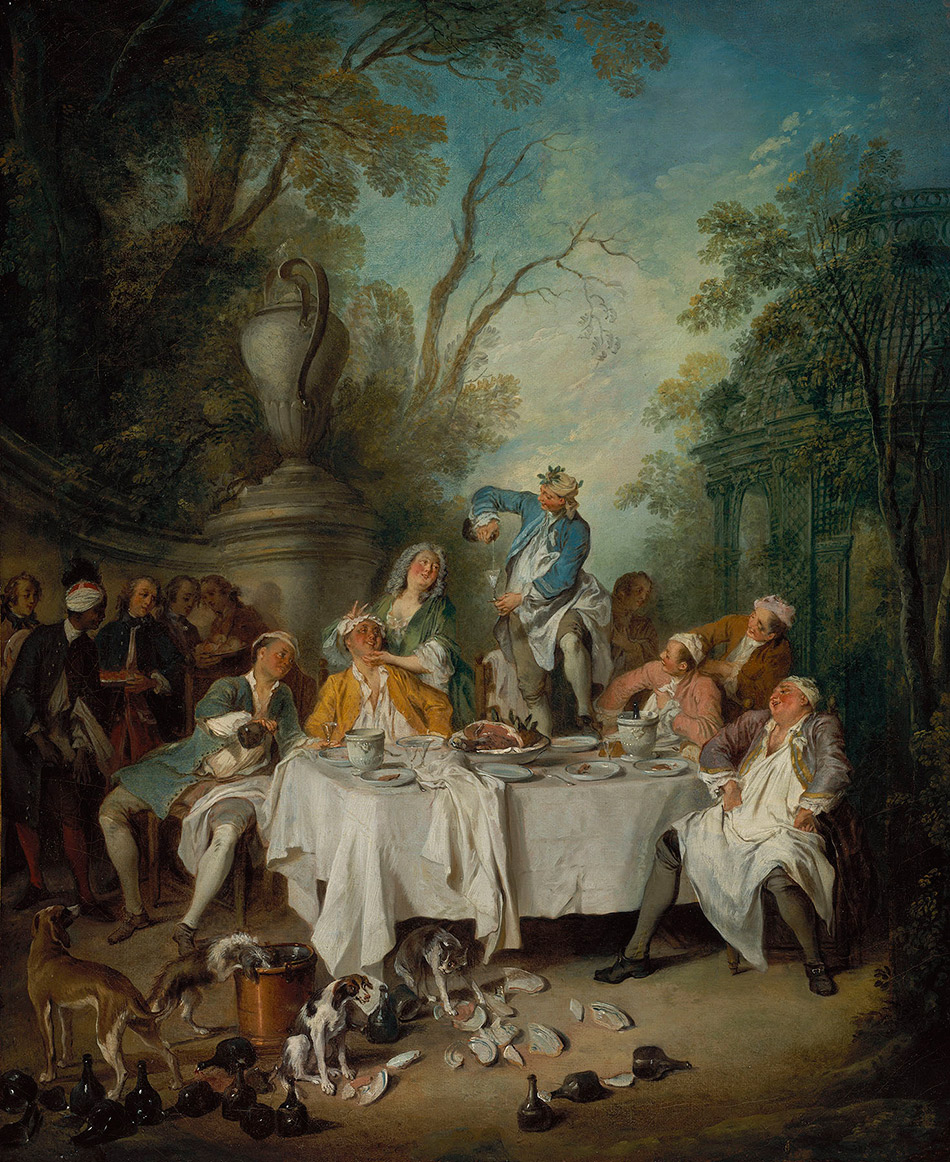 Nicolas Lancret, Luncheon Party In a Park, ca, 1735. Oil on Canvas, 21 ¼ x 18 1/8 in. (54.1 x 46 cm) Museum of Fine Arts, Boston, MA
Nicolas Lancret, Luncheon Party In a Park, ca, 1735. Oil on Canvas, 21 ¼ x 18 1/8 in. (54.1 x 46 cm) Museum of Fine Arts, Boston, MA
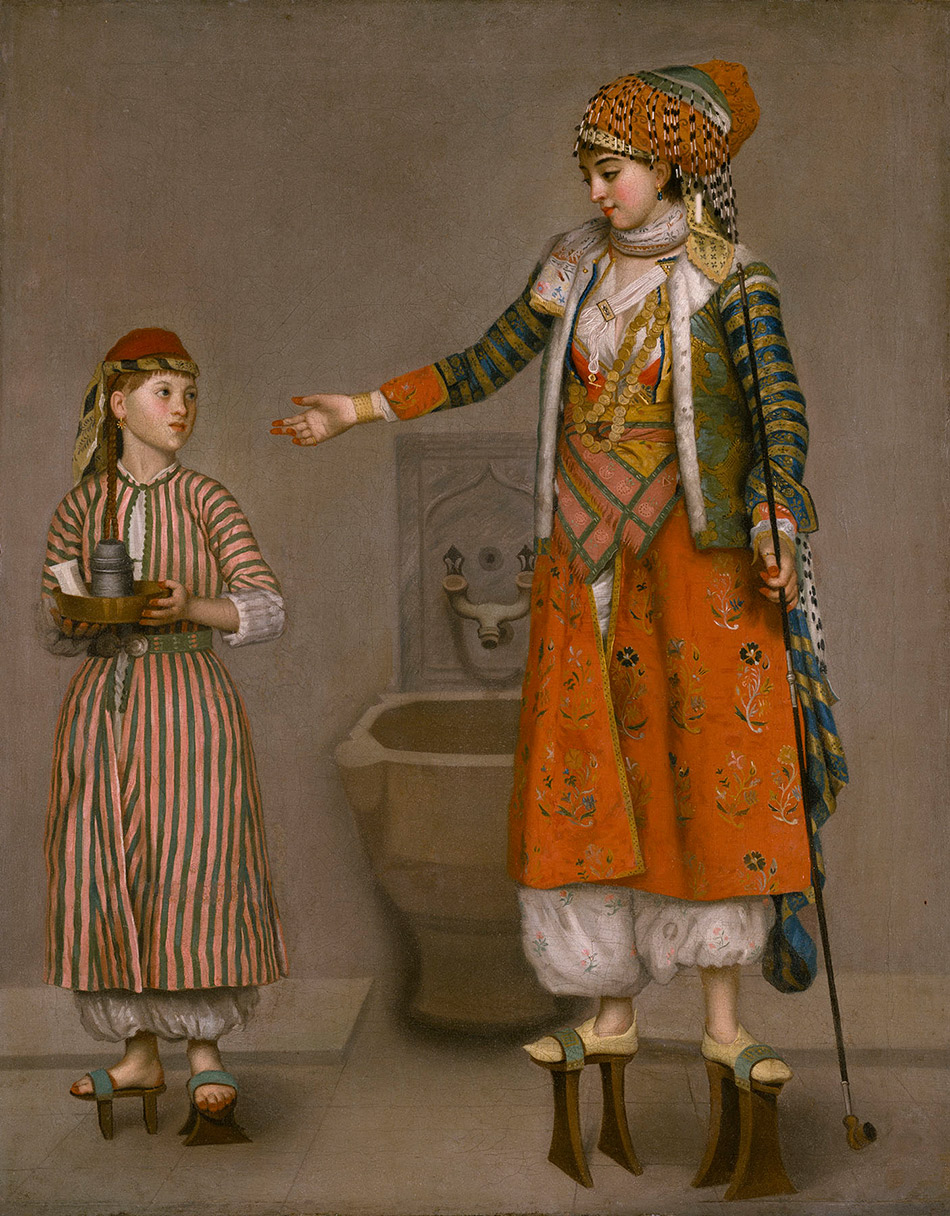 Jean-Etienne Liotard, A Frankish Woman and Her Servant, c, 1750. Oil on Canvas, 28 ½ x 22 ½ in. (72.4 x 57.2 cm) Nelson-Atkins Museum of Art, Kansas City, MO. Purchase: William Rockhill Nelson Trust, 56-3. Photo: E.G. Schempf
Jean-Etienne Liotard, A Frankish Woman and Her Servant, c, 1750. Oil on Canvas, 28 ½ x 22 ½ in. (72.4 x 57.2 cm) Nelson-Atkins Museum of Art, Kansas City, MO. Purchase: William Rockhill Nelson Trust, 56-3. Photo: E.G. Schempf
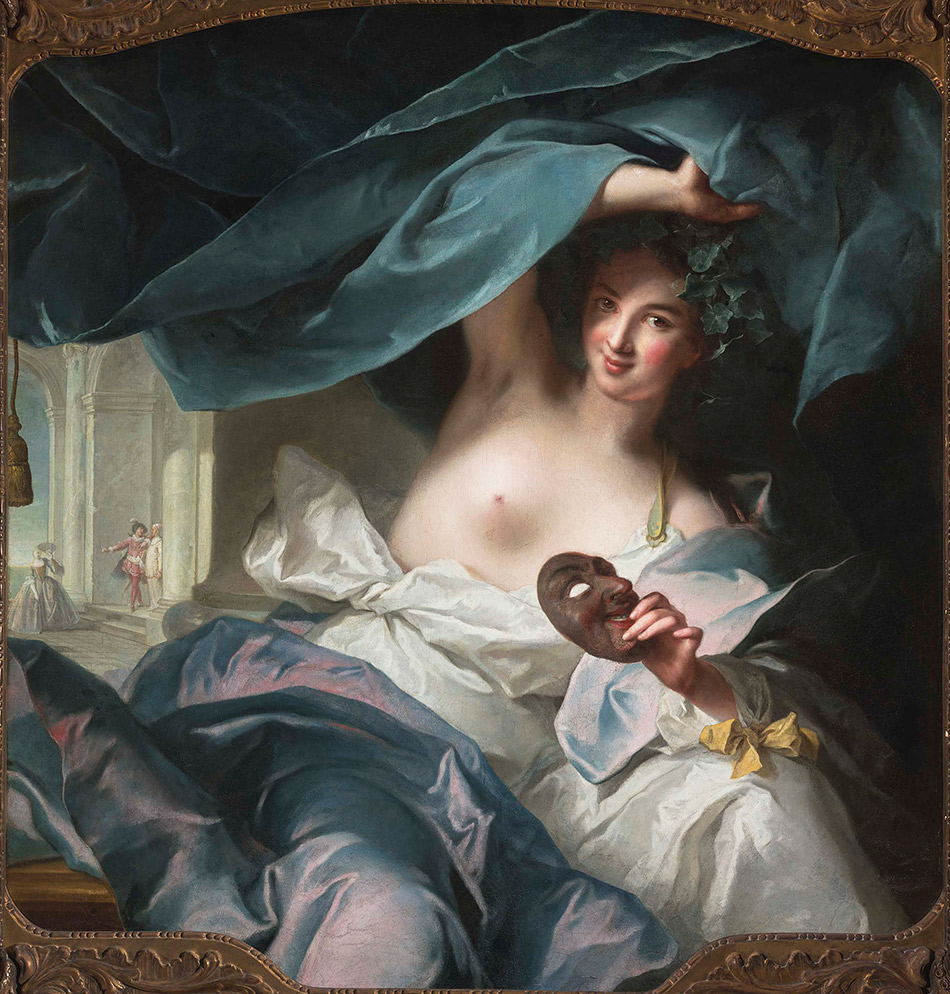 Jean-Marc Nattier, French, 1685–1766, Thalia, Muse of Comedy, 1739. Oil on canvas, 53 1/2 x 49 in. (135.9 x 124.5 cm) Signed and dated at the left on the column: Natteir pinxit 1739. The Fine Arts Museums of San Francisco, museum purchase, Mildred Anna Williams Collection, 1954.59. Image courtesy the Fine Arts Museums of San Francisco
Jean-Marc Nattier, French, 1685–1766, Thalia, Muse of Comedy, 1739. Oil on canvas, 53 1/2 x 49 in. (135.9 x 124.5 cm) Signed and dated at the left on the column: Natteir pinxit 1739. The Fine Arts Museums of San Francisco, museum purchase, Mildred Anna Williams Collection, 1954.59. Image courtesy the Fine Arts Museums of San Francisco
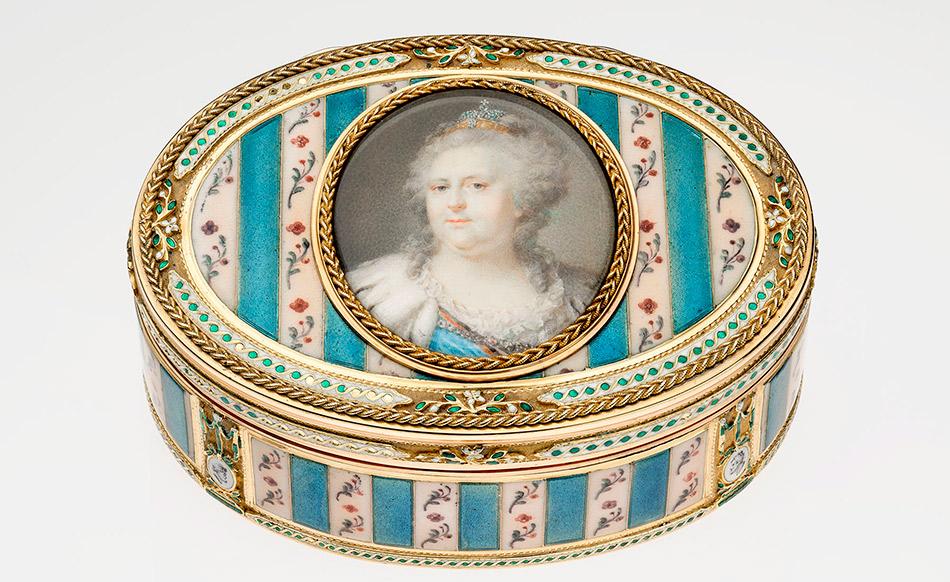 Swiss Oval Snuffbox with Miniature of Catherine the Great, c. 1775. Gold and enamel, set with semi-precious gemstones. Length: 3 ¼ in (8.3 cm) Museum of Fine Arts, Boston, MA
Swiss Oval Snuffbox with Miniature of Catherine the Great, c. 1775. Gold and enamel, set with semi-precious gemstones. Length: 3 ¼ in (8.3 cm) Museum of Fine Arts, Boston, MA
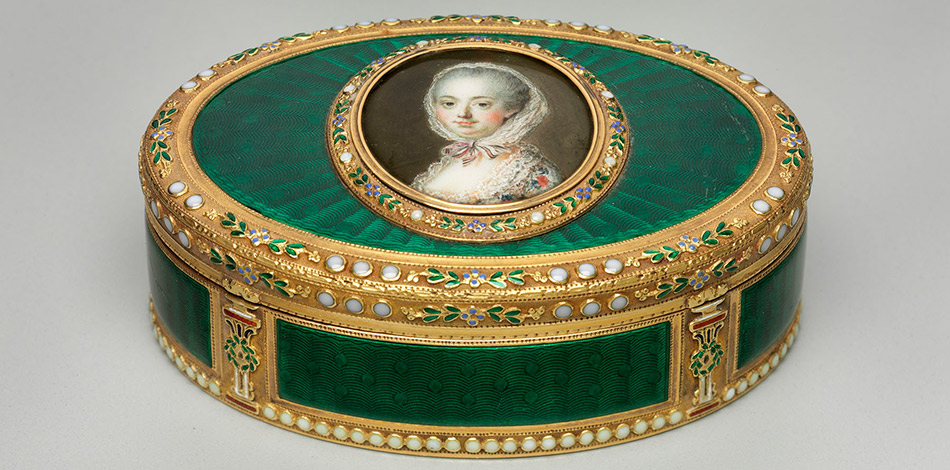 Swiss or German, after François Hubert Drouias. Snuffbox with Portrait of Madame de Pompadour, Late 18th century. Gold and enamel, width: 3 ¼ in. (98.3 cm) Museum of Fine Arts, Boston, MA
Swiss or German, after François Hubert Drouias. Snuffbox with Portrait of Madame de Pompadour, Late 18th century. Gold and enamel, width: 3 ¼ in. (98.3 cm) Museum of Fine Arts, Boston, MA
 Giovanni Domenico Tiepolo, The Charlatan, 1756. Oil on canvas, 31 ¾ x 42 7/8 in. (80.5 x 109 cm) Museu Nacional d’Art de Catalunya, Barcelona
Giovanni Domenico Tiepolo, The Charlatan, 1756. Oil on canvas, 31 ¾ x 42 7/8 in. (80.5 x 109 cm) Museu Nacional d’Art de Catalunya, Barcelona
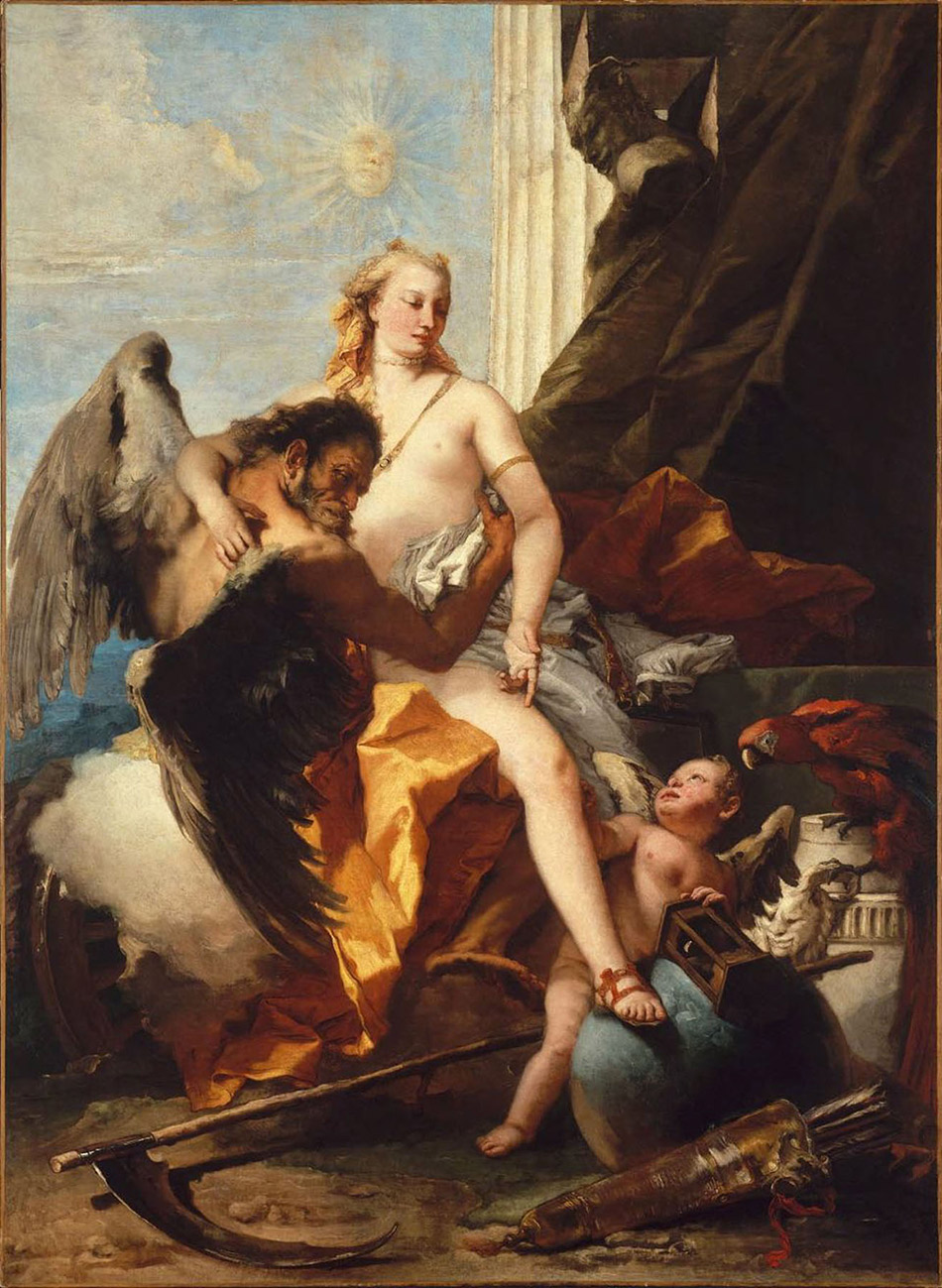 Giovanni Battista Tiepolo, Time Unveiling Truth, ca. 1745-1750. Oil on canvas, 91 x 65 3.4 in. (231,1 x 167 cm.) Museum of Fine Arts, Boston, MA
Giovanni Battista Tiepolo, Time Unveiling Truth, ca. 1745-1750. Oil on canvas, 91 x 65 3.4 in. (231,1 x 167 cm.) Museum of Fine Arts, Boston, MA
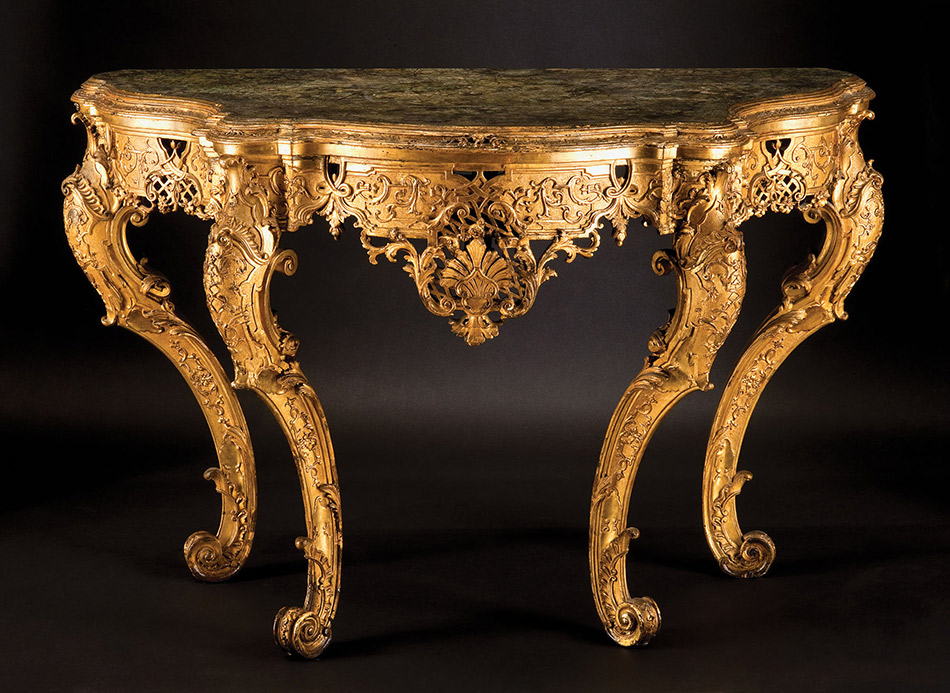 Venetian. Console Table, ca, 1725-1750. Gilded Wood, 31 ¾ x 49 x 24 ½ in. (80.6 x 124.5 x 62.2 cm) John & Mable Ringing Museum of Art, Sarasota, FL
Venetian. Console Table, ca, 1725-1750. Gilded Wood, 31 ¾ x 49 x 24 ½ in. (80.6 x 124.5 x 62.2 cm) John & Mable Ringing Museum of Art, Sarasota, FL
Statement
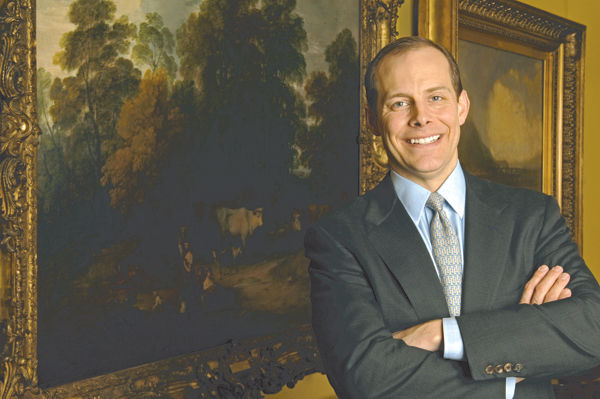 Eric M. Lee,
Eric M. Lee,
director of the Kimbell Art Museum
“Casanova’s era has plenty in common with our own,” “The 18th century’s cult of celebrity, of shifting identity, its use of gossip as currency and its obsession with travel and novelty are all cultural forces that confront us today. I’m confident that this exhibition will resonate with visitors and am thrilled to welcome them on a grand tour of the visual delights of Casanova’s time.”
Organizers: Casanova: The Seduction of Europe has been organized by the curators of the three presenting institutions. In Fort Worth, C.D. Dickerson, now head of sculpture and decorative arts at the National Gallery of Art, Washington, D.C., first proposed the idea for the exhibition to deputy director George T.M. Shackelford, who has supervised the project. In San Francisco, former curator in charge of European paintings Esther Bell (now at the Clark Art Institute, Williamstown), her successor, Virginia Brilliant, their colleague Kirk Nickel and curator in charge of European decorative arts and sculpture Martin Chapman have given their expertise to the project. Finally, in Boston, art of Europe chair Frederick Ilchman, senior curator of decorative arts Thomas Michie and Pamela Parmal, chair of textile and fashion arts, assisted by Courtney Harris, were responsible for the stewardship of the loan process and the assembly of the exhibition catalogue. Bell, Dickerson, Ilchman and Michie are essayists for the lively book that accompanies the exhibition, in conjunction with a panoply of international scholars.
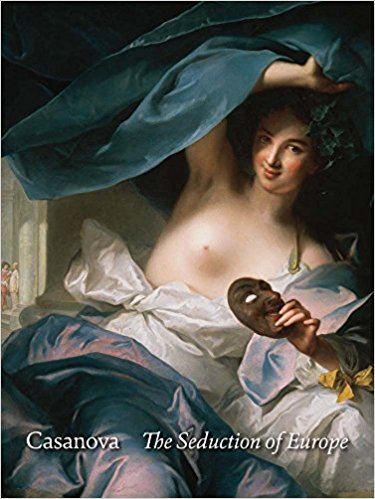 CATALOGUE
CATALOGUE
Edited by Frederick Ilchman, Thomas Michie,
C. D. Dickerson III, and Esther Bell
MFA Publications Museum of Fine Arts, Boston
With contributions by Meredith Chilton, Jeffrey Collins,
Nina L. Dubin, Courtney Leigh Harris, James H. Johnson,
Pamela A. Parmal, Malina Stefanovska, Susan M. Wager,
and Michael Yonan
Hardcover: 344 pages
Language: English
ISBN-10: 0878468420
ISBN-13: 978-0878468423
Dimensions: 5.9 x 0.9 x 8.3 inches
$ 45
KIMBELL ART MUSEUM
3333 Camp Bowie Boulevard, Fort Worth, TX 76107
For information, call 817-332-8451 www.kimbellart.org
hours: Tuesday–Thursday and Saturday, 10 a.m.–5 p.m.
Friday, noon–8 p.m.; Sunday, noon–5 p.m.; closed Monday
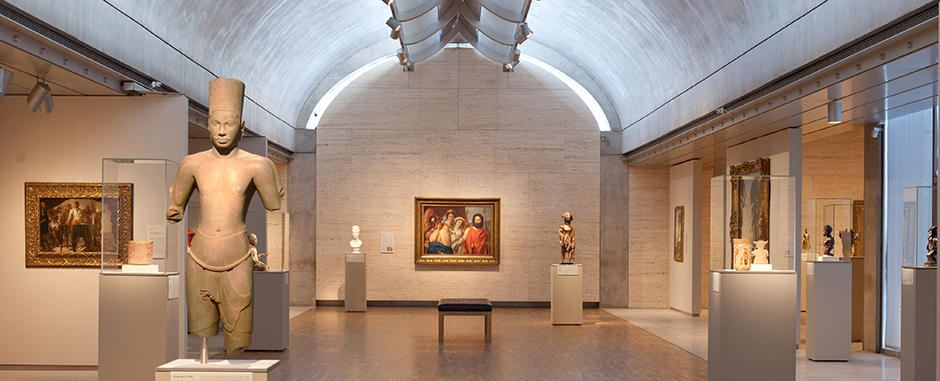 The Kimbell Art Museum, owned and operated by the Kimbell Art Foundation, is internationally renowned for both its collections and for its architecture. The Kimbell’s collections range in period from antiquity to the 20th century and include European masterpieces by artists such as Fra Angelico, Michelangelo, Caravaggio, Poussin, Velázquez, Monet, Picasso and Matisse; important collections of Egyptian and classical antiquities; and the art of Asia, Africa and the Ancient Americas.
The Kimbell Art Museum, owned and operated by the Kimbell Art Foundation, is internationally renowned for both its collections and for its architecture. The Kimbell’s collections range in period from antiquity to the 20th century and include European masterpieces by artists such as Fra Angelico, Michelangelo, Caravaggio, Poussin, Velázquez, Monet, Picasso and Matisse; important collections of Egyptian and classical antiquities; and the art of Asia, Africa and the Ancient Americas.